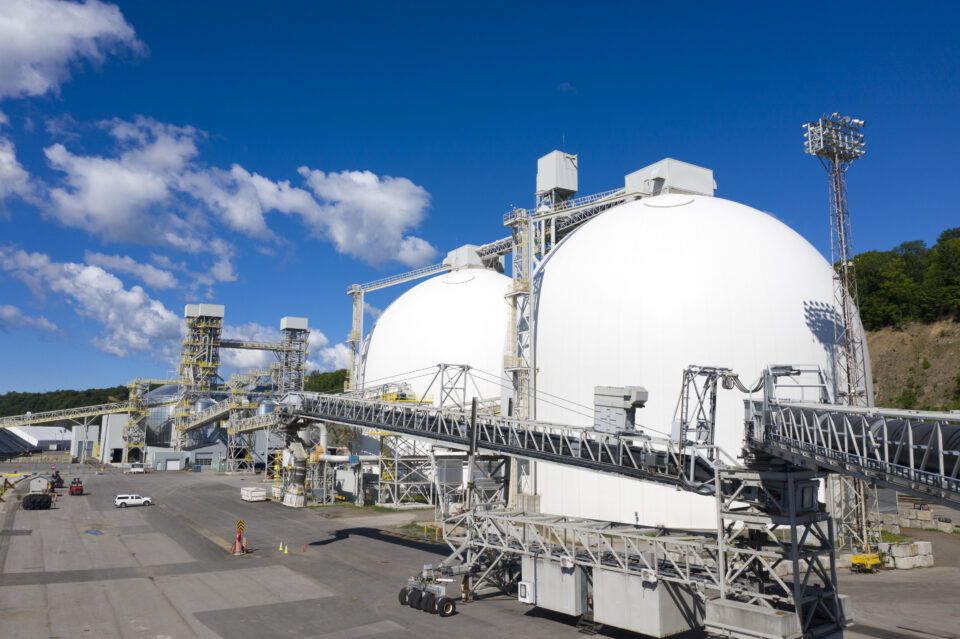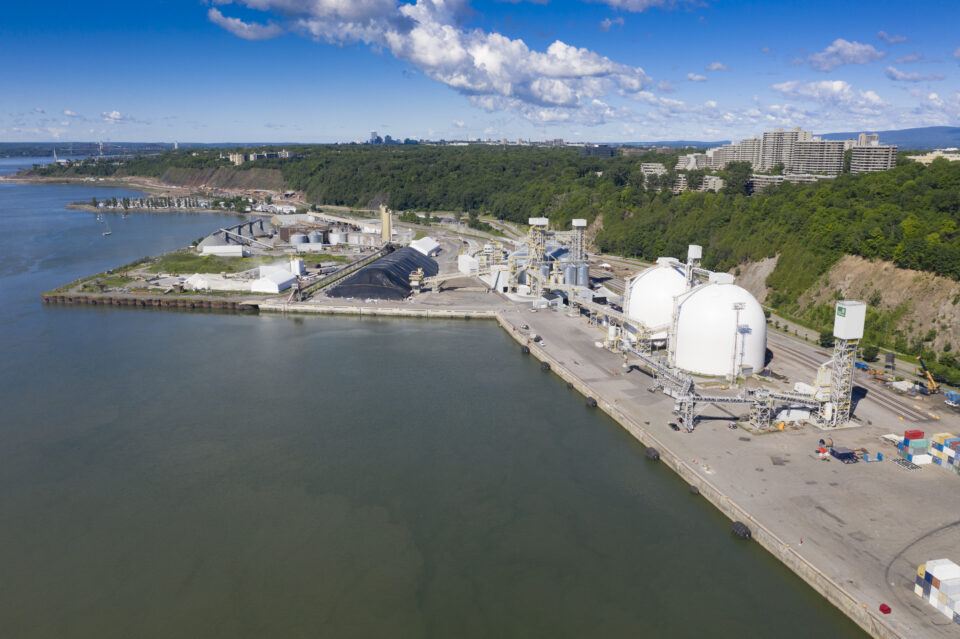Think once you’ve chosen a product to store in a dome, you’re locked in for life? Think again. Transitioning from one stored product to another might not be as complicated as you’d expect, especially if your company anticipates potential shifts from the get-go.
One recent example followed the sale of two QSL wood-pellet domes to the company Sollio, which stores grain. In a letter of recommendation, Sollio Vice President of Business Development and Strategic Advisor to the Executive Committee Simon Baillargeon wrote that Sollio has been storing grain in one of the domes since fall of 2019, and that while these domes were not designed initially for grain, “we can say nonetheless that we have had a good performance with the quality of grain, as long as the storage period is not too long.” Additionally, he writes, “We also found that having this large storage capacity is well-suited for soybean and wheat exports, that we handle and export in large quantities, since it allows us to completely load an ocean-going vessel with the content of one dome.”

Dome Technology clients have made storage changes in the past. It’s a smart way to maximize on existing infrastructure and to ensure multiple options are available no matter what the market does, said Dome Technology sales manager Lane Roberts. “In case (an industry) fell through, a company would still have the capability to reach out to other things,” he said.

The easiest way to make a dome versatile for distinct products is to plan the project with Plan B in mind. Here are a few factors company management and facility operators should consider for a smooth transition:
To maximize storage, plan a facility designed for the heaviest product. This ensures engineers will design the dome and its systems for the hardest work they might face.
The easiest changes occur between similar products. A company switching from, say, coal to petcoke isn’t going to require the same degree of calculations, reconfiguring, or cleaning as switching from canola to sugar.
Imagine you have a dome that can store 100,000 MT of product. You could potentially store 100,000 MT of a different product with similar ground loading characteristics with no foundation modifications required.
Transitioning is more difficult when products have dramatically different angles of repose. For instance, for a dome storing cement clinker with a steep angle of repose—about 45 degrees—switching to cement powder with 10 to 12 degrees is going to be tricky. That’s because the clinker will have a higher load in the middle and lower load on the perimeter while the other will have pretty much the same loading straight across. Unless planned with multiple products in mind, the dome will be engineered for the pressures of one material, which might not be compatible with another.
Similarly, watch out for huge discrepancies in density. If you were to switch from pellets to molybdenum, you’d go from a product with 45 lbs of pressure per cubic foot to 115, so analyzing the lower portion of the dome would be necessary.
For denser products, the foundation might also reach its threshold before the dome is full. In other words, a company won’t be able to completely fill the dome with a different, denser product since the dome can only store to the level it is engineered.
Cleaning the dome shouldn’t be a deterrent. A good spray down and scrub with detergent might be all that’s required. In most cases, any residue left behind would be negligible, but considerations will vary industry to industry.
Not everything needs to be considered upfront. Some features can be added in the future. For instance, if your company has to switch belts, that’s a relatively easy change—though it obviously comes with a cost.
Sometimes the price won’t justify the transition. One of those times might be moving from a non-combustible to combustible product, which may require the addition of explosion venting or strengthening that could be quite expensive or cost prohibitive.
Lastly, some materials might have chemical incompatibilities. For instance, some fertilizer will corrode standard rebar, so unless a dome was built with coated rebar for this specific product, a product transition might be a bad idea.
The ability to change the product stored within a dome gives companies flexibility to adjust with the market. With the help of engineers and product experts, companies can use the strength of the dome to stay ahead of the game in the bulk industry.